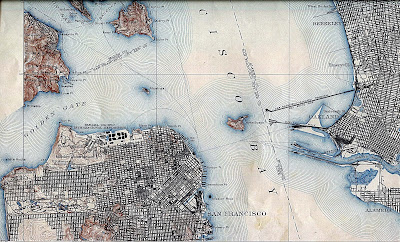
Those of you that are familiar with this blogger's sordid past may recall that I once worked at one of San Francisco's most famous historical sites: City Lights Books. Having grown up in the North Beach neighborhood of San Francisco, City Lights was more of a church to me that the catholic school I attended several blocks away on the other side of Washington Square Park. When I returned to the city in 2008 after a nine year absence, I was offered a position in the mail room of the store's publishing division. My year at City Lights was one of the most enriching spaces I had the fortune of experiencing during my time in the city. Aside from meeting some of the most brilliant artists in the San Francisco Bay Area (see D. Scot Miller's blog AfroSurreal Generation: http://dscotmiller.blogspot.com/), I also was introduced to an entire archive of poets, writers, and artists that I had remained entirely unaware of despite my self-proclaimed literary knowledge.
Amongst these many discoveries was the poet Bob Kaufman (far right in above photograph). Kaufman, whose autobiographical context remained hidden or unavailable much in the same way Ondaatje writes the life of Buddy Bolden in Coming Through Slaughter, remains prominent in my mind several years removed from San Francisco. Called by some, the "original beat," Kaufman's relationship to that entire generation of writers and artists remains somewhat difficult to articulate. The aesthetic differentiation of Kaufman's poetics from the likes of Ginsberg is the sense of movement that seems to animate a form that is not entirely different, at least at first glance, from his contemporaries.
I dedicate this post to Kaufman largely because I am trying to get down on paper what may or may not someday materialize into a completed project. The work of Kaufman and its place(s) within and across multiple genres intrigues me as someone whose interests--among many--are post-WWII cultural production in the San Francisco Bay Area and the intersections of radical politics and literary forms.

The brief research I have conducted on Kaufman leads me to ask a few questions/thoughts I would like to keep in mind as I move on this project:
1. Kaufman, someone who was seemingly not interested in leaving the sort of archive his contemporaries had the good fortune to have collected for them, challenges our conception of the poet/artist/performer. As someone who was interested in getting "involved in uninvolvement," Kaufman the figure evades us. What does it mean to be a poet who relies on the sonic deliverance of his poetry to ensure its capacity for (re)production? (Kaufman did not start writing down his poems until the late 50's when he moved to San Francisco.)
2. Kaufman took a vow of silence to protest the Vietnam War. What does his silence do to the sonic dimensions of his poetry? Do they have to be considered the same? Or does Kaufman's "uninvolvement" make us reconsider the sets of relations we may or may not consider inherent between the poet and poetry?
3. An oft unrecognized figure in a predominately white, male literary movement, I am curious about the emerging radicality (and its various forms) in the area and if there might be any connection between Kaufman and these emergent political forms. In particular, does this relationship, real or imaginary, have anything to do with the shared spaces or origins of their performance?
I realize that these thoughts are somewhat scattered and probably only make sense to myself. However, this will be the project that occupies the majority of my time for at least the next year, so I wanted to try and lay a some kind of foundation for things to come. More on Kaufman soon.
Link to Baldwin's Film: https://diva.sfsu.edu/bundles/187041



I have been thinking about the visual equivalents of silence, unvisibility (made unseeable by acts of framing, epistemological limitations to seeing and knowing,etc) and invisibility (just not there) as well as the trace in a photographic archive i'm currently working with. What are the multiple registers of silence(ing) for Kauffman? How do they relate to one another? Do they and/ or how do they relate to their visual equivalents? what can all of this tell us about the specific ordering of the sensorium in relation to projects of discovery, uncovering, and veracity that are common to all of the disciplines? Might practitioners of Black Studies (as not just the study of black people) theorize alternative archival practices that transform certain aphasiatic episodes into moments of possibility, as Hartman and some other people that you know better than I might suggest? Keep the posts coming Dr. Nikolas O. Sparksk, PhD. Esq.
ReplyDelete